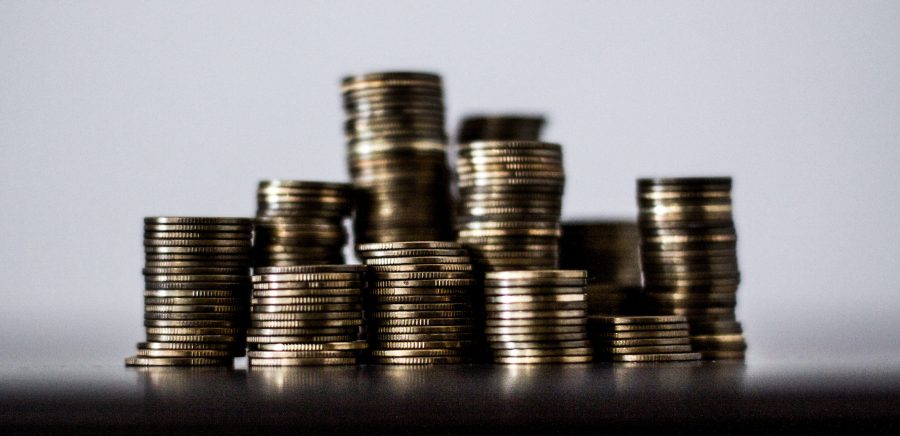Lafayette’s endowment fell more than $60 million in the last two years, and last year saw its sharpest drop since 2009.
At the end of last fiscal year, its reported market value was $740.3 million, a 5.4 percent decline from the previous year.
Chief Investment Officer Joseph Bohrer noted that fund managers across the board generally recognize that the stock markets have entered a “low-return world.”
“Most investors think that the world we’re living in is one where equity market returns and bond market returns are not going to give you the kind of returns that they have historically,” said Bohrer, who was hired in 2014 to manage the endowment, which was then at $803.7 million.
The college withdraws 5 percent of the endowment to pay for annual operating costs. To smooth out the effects of annual investment returns, the value of that withdrawal is determined from a three-year average of the endowment, Vice President for Finance and Administration Roger Demareski said. The rest of the budget is mostly covered by students’ tuition.

If next year produces another negative return for the endowment, these three years may be seen as a loss. Demareski said that should not even have a minimal effect on tuition.
“We would have to have a significant reduction over several years for us to have to then change the revenue model with tuition,” Demareski said, adding that the college would sooner reduce spending than increase revenue through other means.
Last year, tuition increased at its highest rate in the last five years.
To have positive growth in the endowment, Bohrer’s team of 26 fund managers have to aim for return rates above the 5 percent level.
Last fiscal year, Lafayette reported an investment return rate of negative 0.8 percent. The college’s withdrawal brought the overall change in the endowment down to negative 5.4 percent.
Colleges similar to Lafayette have also reported negative return rates this year, some more severe than Lafayette.
[iframe src=”https://docs.google.com/spreadsheets/d/11K_qs6Rx-bkUpsnAs5DgnZFiPXNco-dbIbWOVT8S3MM/pubchart?oid=747681270&format=interactive” width=”100%” height=”450″]
Dickinson College, for example, posted a 4.4 percent loss on their website, amounting to an overall 7.4 decline last fiscal year. Ivy League colleges have fared better, posting an average return that matched Lafayette’s at negative 0.8 percent. Lehigh University and Bucknell University have not yet released the endowment performance for last fiscal year.
The endowment’s market value fluctuates largely with national and global stock indices. About 50 percent of the endowment’s public equity portion is invested in the U.S., and since the recession, U.S. equity markets have performed generally high, save 2015, when it was just around zero percent. Bohrer noted that this makes the dip look more drastic.
“In the last seven years or so,” he said, “we’ve had these very extreme and unusual and unprecedented central bank actions – and I’m referring to zero interest rates and quantitative easing. What that’s done is drive up the prices of most asset classes, to a level where they are today.”
The 70/30 stock-bond index is, in Bohrer’s words, a “quick and dirty” measure of performance of global markets at that ratio. Last year, it showed Lafayette’s endowment performed better than those global markets, which shrank 1.2 percent.
The previous year, they grew 1.2 percent, while the endowment returned 1.5 percent. Roughly half of Lafayette’s endowment is invested in stock markets, while 15 percent is in bond markets.
As of the end of August, two months after the initial value was reported, the endowment had rebounded to a level of $750.5 million, according to Bohrer. In the same period, the Standard & Poor’s 500 index hit a historic high.
Bohrer said there is little change to be made beyond reallocating some assets classes, because the endowment value ultimately depends on the status of the stock and bond markets.
“I think that we are being a little bit more defensive in how we’ve allocated the portfolio,” Bohrer said. “We’re not making massive changes, because even though we think returns are going to be lower than they have been in the past, we still think stocks are going to be the highest returning asset class.”
On June 30, the end of last fiscal year, about 49 percent of the endowment was in public equity. To “trim around the edges,” Bohrer and the management team has reduced that proportion to around 47 or 48 percent.
“I’m not sure I have a magic solution to that problem,” he said. “We work really hard at making sure that we’re maximizing our returns for the risk that we’re taking, and I think that’s sort of all we can do.”

























































































































